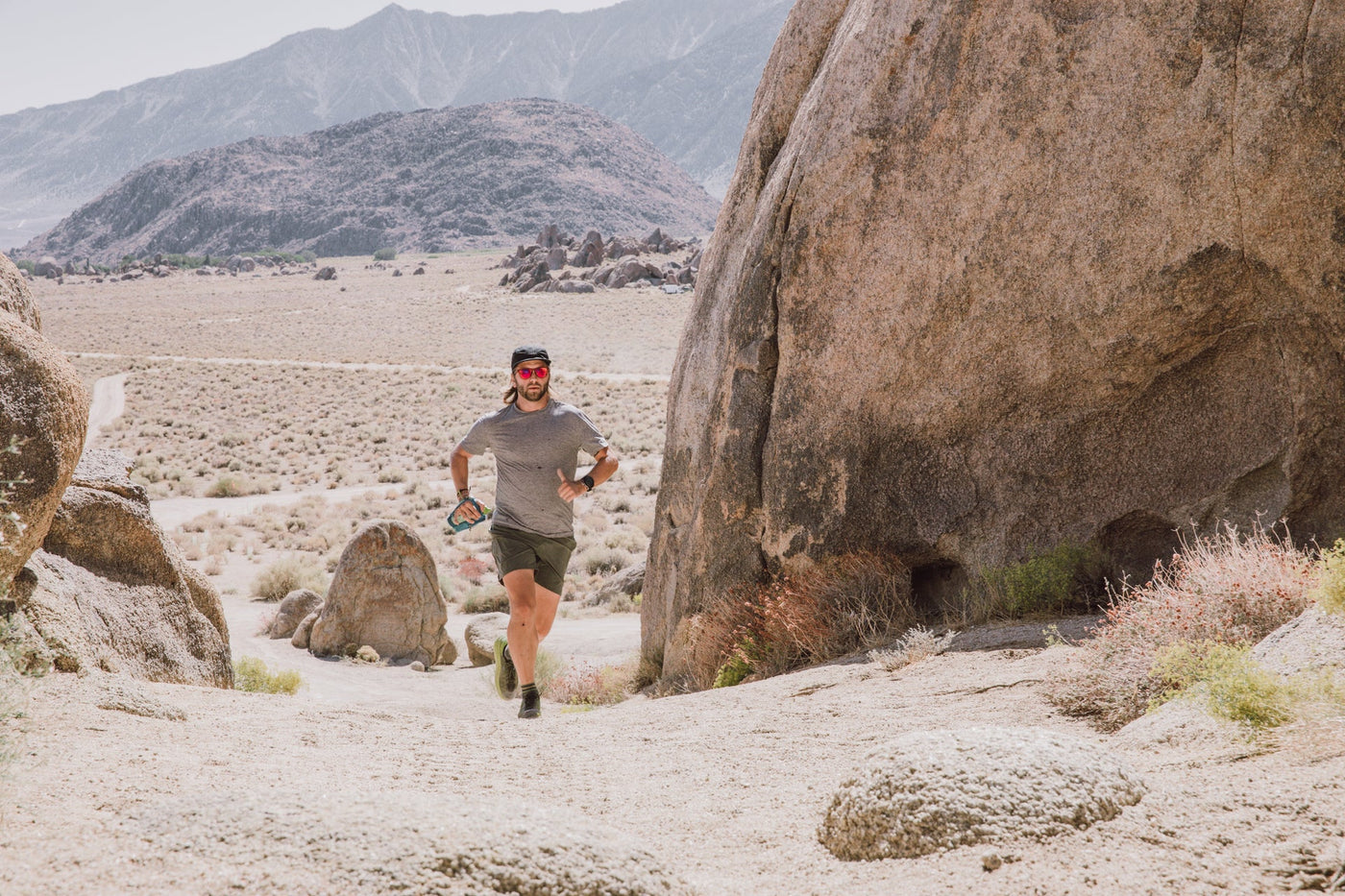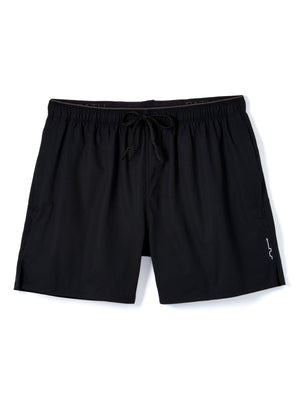
With outdoor temps rising and summer heat just around the corner, an athlete's ability to adapt and excel despite the conditions can lead to their personal success in racing and training. This guide delves into the crucial aspects of managing the taxing effects of hot and humid weather during training. It explores techniques and strategies to help guard against potential health risks and enhance performance. With the right knowledge and tools, you can turn seemingly adverse conditions into powerful allies in your fitness journey.
Navigating heat and humidity during training presents a unique set of challenges. One thing to remember is that weather stress is real. Different weather conditions can affect your heart rate, perceived effort, and running pace. Therefore, adapting your training approach to these conditions is crucial.
Running in the heat can be much harder!
When you go out for a run, you often notice that your heart rate increases over time at the same effort level.
During hot and humid weather conditions, your body is using a significant amount of energy to cool down. The additional stress these conditions place on your body is communicated to your brain, leading to increased effort levels and an increase in your heart rate.
Maintaining or lowering effort levels, which often equates to slowing down your running pace, can help you stay keep your heart rate in the training zone you are aiming for.
The dangers of training and racing in the heat
Training in high heat and humidity necessitates particular precautions. It's vital to understand the warning signs of heat illness like muscle cramps, heat cramps, fatigue, pale and cool skin, thirst, profuse sweating, and more severe symptoms like confusion and faintness. Heat illness can be severe, leading to serious health problems or even death, especially during hot and humid days. Immediate medical attention may be required to lower the body temperature promptly.

Human life is reliant on our body's ability to maintain a stable temperature within a specific range – between 35 degrees Celsius (95 degrees Fahrenheit) and 42 degrees Celsius (107.6 degrees Fahrenheit). External temperatures and the intensity of physical activities introduce a wide range of variables that the body must adapt to. When we engage in exercise, the bulk of our energy expenditure is directed towards managing heat, leaving only a smaller portion for muscle movement. With an increase in the intensity of the running, the production of heat in the body also escalates. Evaporation of sweat serves as the primary means for our bodies to cool down. The impact of weather conditions varies across individuals, with the main disparities lying in the body's capacity for thermoregulation and managing water and electrolyte balance.
A number of strategies can make workouts in hot weather conditions more manageable. Running early in the morning or late at night when the temperatures are cooler, running indoors on a treadmill, adjusting your pace according to effort level, splitting your long run into two shorter runs, and running in shaded areas as much as possible are some of them.

Acclimating yourself to heat training can help tremendously. This includes running in the heat for a minimum of 5 to 10 times, ideally for an hour or more. Start with a reduced exercise duration and intensity. Also make sure to consume extra fluids and electrolytes. Be cautious with strategies such as overdressing or sauna use for heat adaptation. These should be approached gradually, ensuring adequate recovery and replenishment.
Nutrition and hydration are key factors when dealing with heat.
Ensure you start hydrated and maintain hydration levels throughout your workout, paying attention to thirst. Be cautious not to over-drink, though, as hyponatremia (low sodium levels) is a serious condition caused by drinking excessive amounts of water. Furthermore, managing your electrolytes and salt levels is crucial, as is keeping your head and neck cool by pouring water over your head at aid stations or using an ice bandana.
How to make an ice bandana?
Coach Jimmy Dean Freeman demonstrates how to make an ice bandana, using a PATH project Pinyon bandana.
When heat combines with high humidity, the apparent temperature can be considerably higher than the actual temperature. This is due to the body's cooling mechanism, which relies on the evaporation of sweat into the atmosphere. High humidity can hinder this process, leading to higher perceived temperatures and increased heat stress. Therefore, when humidity is involved, it is crucial to exercise additional caution.

Cooling strategies for running in hot weather:
- Stay well hydrated; before, during and after your workouts.
- Do not over-drink, drink to thirst. Hyponatremia is a serious condition and people have died from over-drinking, so be very careful there.
- Run with a water bottle with ice or an ice bandana. This alone can truly help keep your body temperature low. If you have a bandana, with ice on your neck, it can keep your core much cooler, or even a water bottle with ice. This can also keep your heart rate lower.
- Manage your electrolytes and salt, with different supplements if needed.
- Do not overdress! I see many athletes running in several layers of clothes. It's ok to feel cool the first few miles of a race.
- Keep your head and neck cool
- Pour water over your head at aid stations.
- Use an ice bandana or towel to cool your neck.
- Sponging the body to lower the skin temperature.
- Use minimal sunscreen in key areas. If you have a thick layer of sunscreen all over your skin, the sweat cannot evaporate from your skin, which is what keeps you cool.
- Whenever you can, run in the shade.
- Use some cooling from the wind, so try not to run in a big pack of runners. This can make a big difference in temperature-feel.

Recognizing and respecting the body's unique thermoregulation mechanisms, staying hydrated, acclimatizing gradually, and modifying exercise intensity accordingly, are key to safely handle the heat. It's crucial to remember that each person's body responds differently to heat stress, and so awareness and listening to your body is vital. Above all, the overall safety and health of the individual should always take precedence over achieving athletic goals. So, whether you're training or competing, remain informed, stay safe, and enjoy the process.
Hot weather running gear:
- Pyrenees T19 hooded running shirt
- Andes Tank and Uinta T-shirt, made from AirDot breathable fabric
- Muir cap with 94 laser cut holes
- Graves PX shorts and Tahoe CL base liner







3 commenti
Good stuff here! I always try to remind myself going into the hot and humid North Carolina summers that: 1) My pace WILL be slower, 2) pre-hydration is important as well as during the run, but have a plan for recovery hydration over the next few hours after the run., 3) Cooling tricks like the ice bandanna can help, but also use on-the-trail things like streams and water-crossings. (I also rigged up an outdoor hose with a shower head in my backyard to stand under in all my clothes after particularly hot days)
I was just talking about this on my last run with a buddy. Great information in this article. Always appreciate the knowledge your team shares. This is a very popular topic and one we all can benefit from.
I was just talking about this on my last run with a buddy. Great information in this article. Always appreciate the knowledge your team shares. This is a very popular topic and one we all can benefit from.